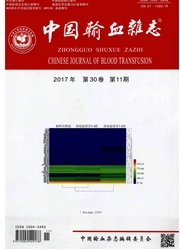

 中文摘要:
中文摘要:
储存红细胞在体外保存过程中经历了一系列形态、功能、新陈代谢的改变。近年来多项研究表明输注保存期长的红细胞会导致多种临床不良预后事件,如感染风险增加、肾衰竭、呼吸衰竭、多器官衰竭、深静脉血栓、死亡等,尤其是生理功能受累患者更易发生不良预后事件,但其具体机制目前尚不明确。FHb对NO的清除作用、TLR4信号通路的激活、免疫细胞功能抑制及铁超载等理论,从不同方面阐述了储存红细胞在体外长时间保存后对机体造成损伤的可能机制。
 英文摘要:
英文摘要:
During storage,preserved red blood cells( RBCs) in vitro undergo a series of changes in morphology,function and metabolism. Recently,multiple researches have shown that RBC units with longer storage periods were associated with increased risks of infection,renal dysfunction,respiratory failure,multiple organ dysfunction syndrome( MODS),deep vein thrombosis,mortality,etc. Especially in critically ill patients,adverse clinical outcomes were more common. However,it is still unclear how these adverse clinical outcomes occurred. The mechanisms may involve nitric oxide( NO) scavenging by free hemoglobin,activation of TLR4 signaling,suppression of monocyte function,and inflammation mediated by iron.
 同期刊论文项目
同期刊论文项目
 同项目期刊论文
同项目期刊论文
 期刊信息
期刊信息
